Looking for another sure way to improve your spa business’s cash flow? When was the last time you looked at your average number of days to turn inventory?
Spa Retailer recently published an article on the SR Panel’s Most Important Numbers where Don Riling, owner of Olympic Hot Tub from Seattle, keys in on inventory turn and and its impact on cash flow. Riling’s store was able to increase available cash to its bottom line by $460,000 in 18 months when they made efforts to reduce his inventory’s average days to sell by 20 days.
Don’t worry. If you’re not paying attention to your inventory turn, you’re not alone. The State of Small Business reports that 46% of small businesses either use a manual process to track inventory or don’t track their inventory at all. According to Marcus Lemonis of CNBC’s show The Profit however, “Effective inventory management is a recurring issue with the struggling small business.” And given that inventory is the greatest investment on a retailer’s balance sheet, he emphasizes that “bad inventory management can bankrupt your business.”
What is inventory turnover?
Inventory turnover is simply the number of times the inventory must be replaced during a given period of time—i.e., the cost of goods sold divided by the average inventory on site. As hot tub retailers, your cost of goods sold is typically the actual wholesale price paid for the product sold (whether it’s a spa, spa part, spa accessory, or other product type). And the average inventory would be the mean of your beginning and ending inventory value within that same timeframe.
...carrying inventory comes at a cost.
And why is it important to optimize inventory turnover? Because carrying inventory comes at a cost. Investopedia breaks these inventory costs down as: 1) the opportunity cost of the money used to purchase the inventory, 2) the space in which the inventory is stored, 3) the cost of transportation or handling, and 4) the cost of deterioration and obsolescence.
If we go back to the Spa Retailer article, Riling realized he could add about $23,000 to Olympic Hot Tub’s available cash for every day the business was able to reduce average days to sell. Motivating, right?
Calculating inventory turnover and average days to sell
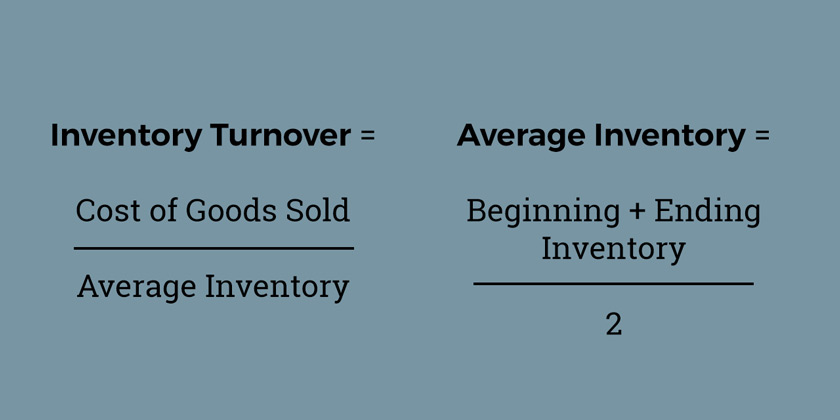
During calculations, make sure you apply the same timeframe to both parts of the equation. So if you’re looking at monthly turn, the same month and days should be used to identify the cost of goods sold and your average inventory.
Once the inventory turn rate is figured, you can easily calculate the average number of days it takes to clear your inventory. If you’re looking at an annual numbers, you just divide 365 by the inventory turnover rate. If you’re working with monthly numbers, then you divide the total number of days in the month by the inventory turnover rate.
What the numbers mean
A higher inventory turnover means less cash tied up in inventory, allowing you to further support sales. In general, higher inventory turns indicate you’re moving merchandise, which should mean that business is good. However, if the turnover becomes too high, you may lose sales as a result of reduced customer selection and product unavailability.
businesspeople would focus more on inventory if, instead of seeing pallets of boxes in a warehouse, they imagined pallets of money. - Ernie Nichols
A lower inventory turnover ratio is a sign that too much cash is tied up in inventory. And this is really where you see the connection between turns and cash flow. Professor of supply chain management at University of Memphis Ernie Nichols tells his students that “businesspeople would focus more on inventory if, instead of seeing pallets of boxes in a warehouse, they imagined pallets of money.”
The key to inventory turnover is achieving the right balance. Instead of going for the highest ratio possible, smart dealers qualify it. They look for the highest inventory turnover they can achieve without it translating into lost sales or other operational disruptions.
Ways to improve inventory turn
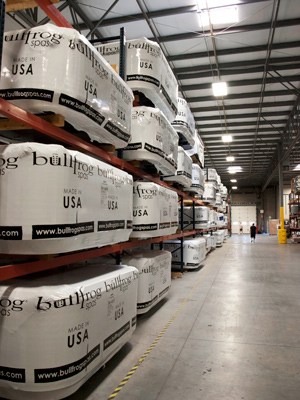 Turns out, Riling’s store is now looking to improve inventory management again (sorry pun poopers). This time around though, they’ve determined that Olympic’s available cash account can gain $37,000 for each day they’re able to reduce average days to sell.
Turns out, Riling’s store is now looking to improve inventory management again (sorry pun poopers). This time around though, they’ve determined that Olympic’s available cash account can gain $37,000 for each day they’re able to reduce average days to sell.
So how does a spa retailer attack the inventory issue? Typically, businesses can increase turns by reducing inventory levels and by increasing sales. And Riling did just that: he reevaluated product ordering and incentivized sales through buy-one-get-one-free and gift-with-purchase promotions.
In terms of ordering, Riling’s sales analysis informed which product models and color mix were most popular on a quarterly basis. So he had a better idea of what to ensure they had in stock at different times of the year. (Interestingly enough, one thing he noticed was that larger capacity models tended to peak around show dates.) Riling discovered that by pushing in-stock purchases over custom or pre-order, his delivery date to the customer shrunk from 45 to 30 days. Again, optimizing turn without negatively impacting operations.
Riling attributes the most significant impact on his turn numbers to a new policy he implemented with his sales team. The policy involved working in a 1.5% discount off total price for payment made in full at time of purchase (regardless of payment type). The move challenged sales staff to break from their programmed thinking that offering more payment options is the most effective way to close a sale. Riling strongly believes that customers do walk into the store with actual intent to buy and should be sold to with that understanding instead.
In support of the policy change, Riling introduced processes to incentivize implementation: for each payment-in-full purchase made, that salesperson was entered into a raffle for a trip to Hawaii. By keeping the policy top of mind, sales staff got to work and quickly recognized the effectiveness of the offer. Now they’ve come to rely on it as an early rather than later stage closing tactic. (At the very least, this serves as an excellent example of how to instill behavior change among your sales team.)
Think more “just in time” and less “just in case.”
Along with Riling’s proven techniques, here’s a more general list of tips from spa dealers can use to optimize inventory turnover.
- Improve Forecasting: Yep, because everyone loves talking about statistical methods, market studies, and economic trends. You can make it a little simpler by building an Xcel spreadsheet based on your past sales data and estimated growth rates for the year to come. Check out these specific steps by Chron.com or one of the many downloadable templates that work just as well (e.g., by smartsheet or Score).
- Improve Order Management: Besides basing orders on better forecasting, a hot tub dealer could put more emphasis on obtaining advance orders to eliminate unnecessary inventory. The risk here is that your days to sale become limited by the custom order timeframe.
- Focus on Top-Selling Products: One way around this risk is to apply Pareto’s 80:20 principle and only invest in products that offer maximum profit for that month or quarter. At the same time, remove products that are creating losses by accruing carrying costs unnecessarily.
- Eliminate Safety Stock: Generally, retailers hold on to excess product to meet unforeseen demand, often leading to excess carrying costs. There‘s really no need for investing in safety stock if forecasting methods are being used effectively. Instead, that money would be better spent investing in faster-moving products. Think more “just in time” and less “just in case.”
- Boost Sales: How is your marketing strategy creating demand? Just as Riling did, look at specific promotional opportunities, especially to unload slower moving inventory. Buy one get one free, gift with purchase, discounts with urgency dates, special pricing events, and a unique or differentiated customer experience are all potential offers that could work here.
What to expect from improved cash flow
This is pretty much a no-brainer. Improved cash flow provides more opportunity for a hot tub business to invest in additional marketing efforts. It also makes it easier to take advantage of purchase incentives from your suppliers. And of course, it provides a greater sense of financial stability.
Currently, the focus on inventory management has Riling and Olympic Hot Tub upgrading software systems, hiring more qualified staff, and even moving into a new location. He’s found that the stronger financial position has improved access to financing opportunities. All by realizing a fewer number of good day’s work.




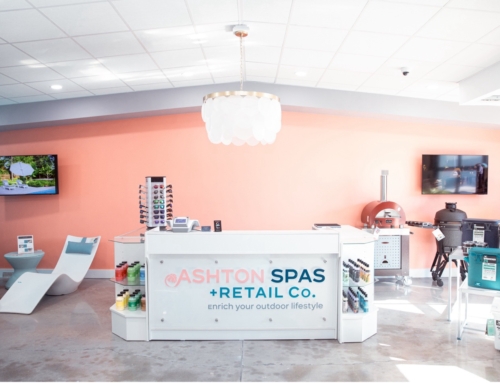

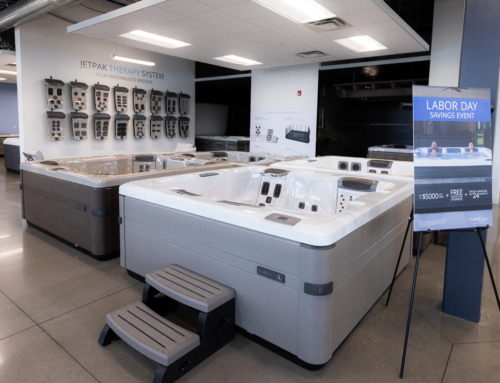
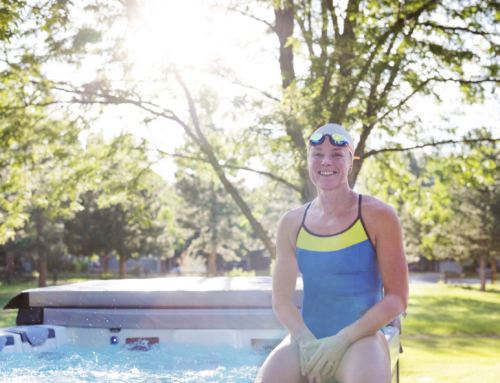

Leave A Comment